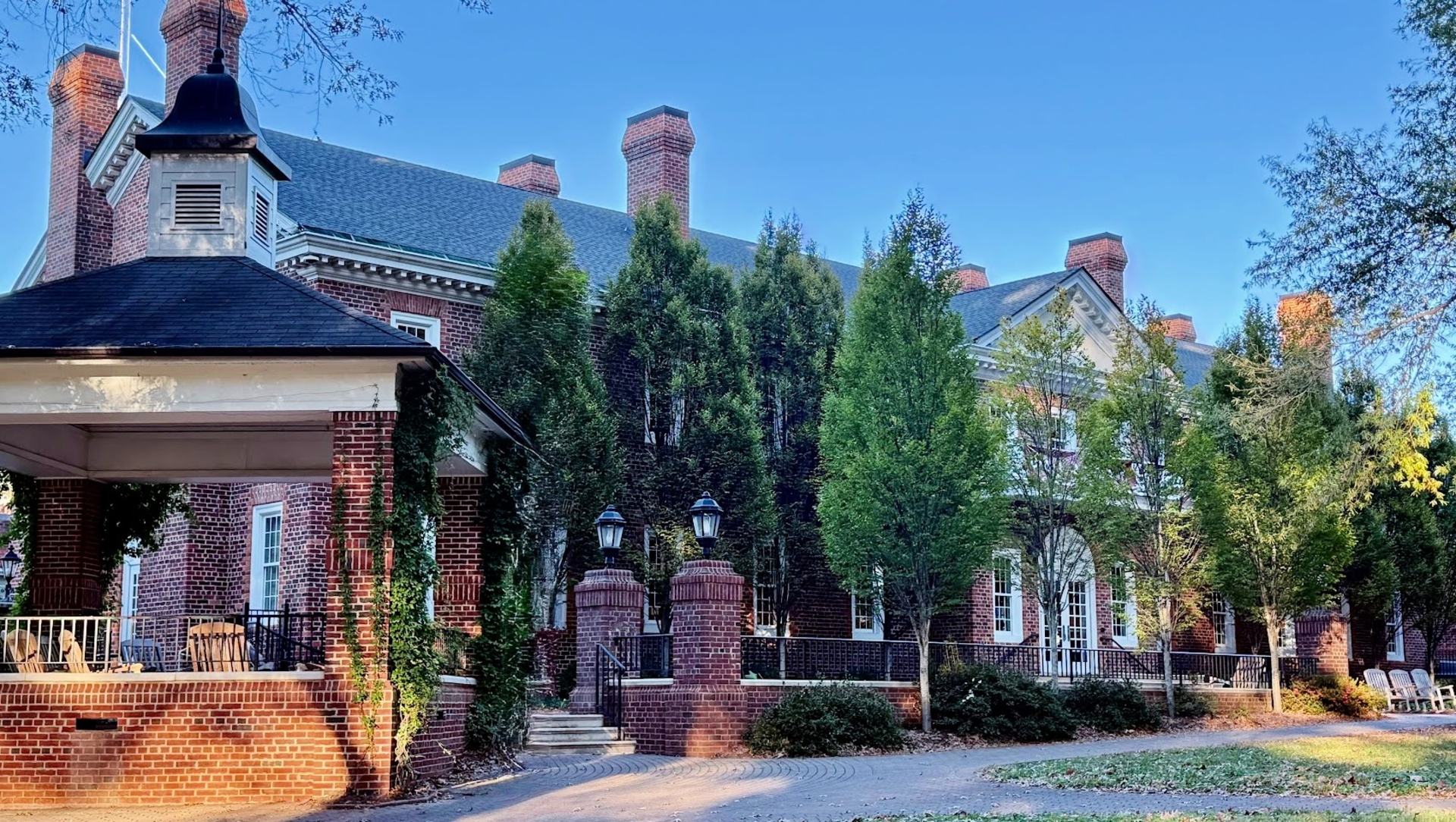
Fifty years ago this month, a second version of Founders Hall reopened for future generations of Guilfordians.
In many ways Founders Hall is nothing like its original version. But it still remains the heart and soul of the College for so many Guilfordians.
(Founders Hall is) the centerpiece of the College. If you graduated from Guilford you spent a lot of time in Founders.”
Founders Hall – at least the 2.0 version – turns 50 this month. That’s five decades as the seat of student government, the host of plays and makers fairs, a spot for student activism and the location of more than a few budding campus romances.
Quaker archivist Gwen Gosney Erickson says the building's walls hold many memories for many Guilfordians. “It’s the centerpiece of the College,” says Gwen. “If you graduated from Guilford you spent a lot of time in Founders.”
What stands today as the heart of campus was once the site of heartbreak — and renewal. In 1973, Guilford officials made a decision that must have felt like heresy: they decided to tear down the original Founders, the first and oldest building on campus. The one that had stood since the 1830s, with soft brick and creaky wood floors – all locally sourced from the red clay and woods surrounding the site – that had borne generations of students. They didn’t demolish it out of disregard. They did it because they cared too much to let it crumble.
Gwen will tell you that the 1960s weren’t an age of sentimentality on campus — they were an age of action. “If you look around Guilford in the 1960s,” she says, “you see a pattern. A number of our older buildings were upgraded to meet modern needs.”
That pattern was everywhere. Duke Hall, once home to a grand auditorium on its upper floors, was gutted and reborn as classrooms after Dana Auditorium was built. As the College began to grow, New Garden Hall, once home to Quaker worship, became offices. Higher education everywhere was under renovation — campuses growing up to meet the demands of new generations, new wiring, new codes, new dreams.
And then there was Founders, the heart of the College. Built in the 1830s with handmade brick and pine beams, it was never meant to live forever. “It had held up for more than a century,” Gwen says, “but it wasn’t going to make it another fifty years.”
The College’s first instinct wasn’t to raze but to rejuvenate. Gut the interior, strengthen the shell, and turn the old women’s dormitory into a vibrant student center. Reality set in fast. The minute you start tampering with a 19th-century structure, 20th century building codes come calling.
“It was a safety issue,” Gwen says. “You’re talking about 1830s wood framing and 1920s electrical work – not exactly the makings of a modern student center.”
In 1974, Founders came down, brick by brick. Guilford didn’t erase its past so much as clear the way for its next chapter. The new building that opened a year later wasn’t a replacement – it was a continuation. It took the spirit of that first hall, where students had once slept and studied, and reimagined it as a place to gather, argue, perform, organize, eat, and belong.
Even amid the demolition, Guilford found a way to honor continuity. The back side of Founders – including the kitchen and dining area – had been added more than a century after the original Founders was built and had sturdier bones.
Stand outside Rachel’s Rose Cottage and Gwen says you can see where the old Founders and new Founders meet. “There’s older brick and then there’s the 1970s brick,” she says.
That small architectural compromise – saving the kitchen while the rest came down – kept the dining hall open during construction. It also stitched the old to the new, a literal throughline in brick and mortar.
When the new Founders opened in 1975, it gave Guilford a true student center for the first time — a living room for the campus. And it gave WQFS, the student radio station, a permanent home after years of drifting between basements across the campus. “It really came into its own in the new Founders,” Gwen says. “By 1975, it finally had a home, a real studio.”
When Gwen organized a 50th anniversary program on Homecoming & Family Weekend, she invited both the residents who once slept in the original dormitory and the students who made the new Founders come alive. “It felt important to bridge those generations,” she says. “People who remembered sleeping in those old rooms and people who remembered spinning records or planning events in the new space.”
In recent years, Founders has undergone another facelift. A remodeled dining center, a new grill in the basement, the atrium and revamped galleries on the second floor and, of course, the plaza and a gazebo on what was supposed to be the left wing of the building dedicated to Paul Zopf, a longtime Sociology and Anthropology professor, and his wife Evelyn.
The new Founders was designed with symmetry in mind — two wings, one on each side of a central hall. Only the right wing, with Sternberger Auditorium, was built. “If you look closely at the original sketches,” Gwen says, “you can see where the other side was supposed to be. Instead, we got the gazebo.”
Fifty years later, Founders still anchors the College — physically and philosophically. It’s where students collide between classes, where the hum of conversation is its own campus anthem. The walls are newer, but the purpose is ancient.
“Founders was never just a building,” Gwen says. “It’s always been where Guilford comes together.”
In that sense, Founders never really fell. It just took a new shape — proof that sometimes the most faithful way to honor your past is to build it all over again.

